How to grow broad beans
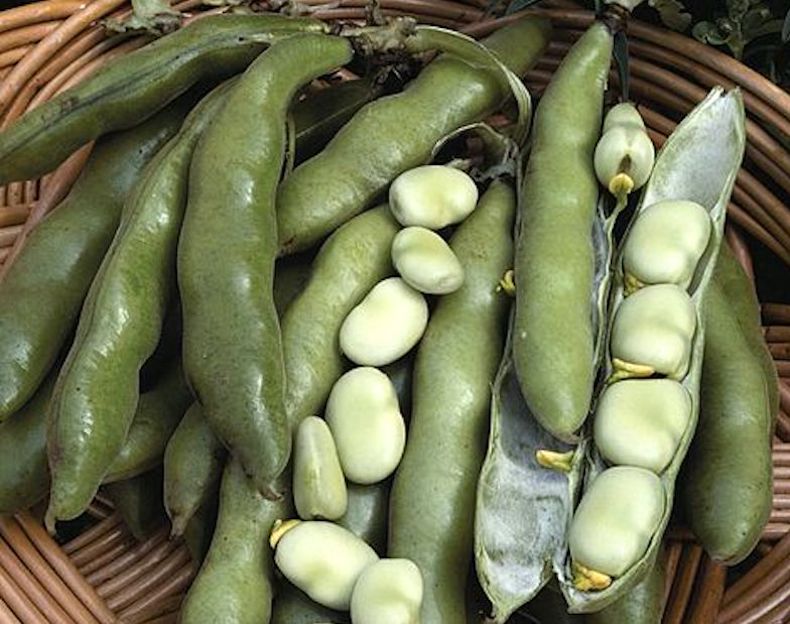
Broad beans are easy to grow and delicious to eat
Image: Photoshot
Broad beans are a superb vegetable for modest-sized plots, producing high yields from a comparatively small area of your garden. Best eaten freshly picked, home-grown crops have a far superior flavour to those found in supermarkets.
Broad beans are cheap and easy to grow from seeds, or you can purchase broad bean plants if you prefer. The perfect vegetable for beginners or children to grow, they're happy in the ground, raised beds or pots. Find our top tips on when and how to grow broad beans at home. For all our varieties, browse both our broad bean seeds and pea and bean plants categories.
Broad bean varieties
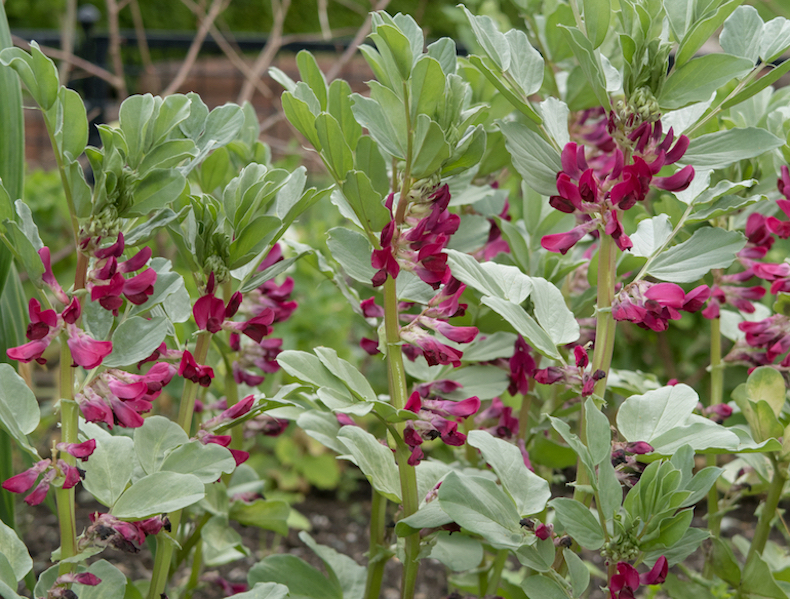
Broad bean 'Crimson Flowered' features stunning blooms and a delicious crop
Image: Peter Turner Photography/Shutterstock
There are many broad bean varieties from which to choose, including some that hold an RHS Award of Garden Merit. Here are a few of our favourites that you might like to try:
- Broad Bean 'Aquadulce Claudia' - An old favourite and one of the best for autumn sowing.
- Broad Bean 'Crimson Flowered' - A heritage, red flowered broad bean that makes an ideal edible ornamental.
- Broad Bean 'The Sutton' - A dwarf broad bean variety reaching just 30cm (12") tall. Perfect for pots or tiny plots!
- Broad Bean 'De Monica' - One of the earliest maturing varieties from a spring sowing.
- Broad Bean 'Masterpiece Green Longpod' - Expect up to 7 beans per pod from this high-yielding variety.
How to grow broad beans
Grow your broad beans in full sun on rich, fertile, well-manured soil. Choose a sheltered spot, and position away from strong winds.
If your soil is very wet or clay-based, start your broad bean plants off in pots to prevent the seeds from rotting in the ground.
When to grow broad beans
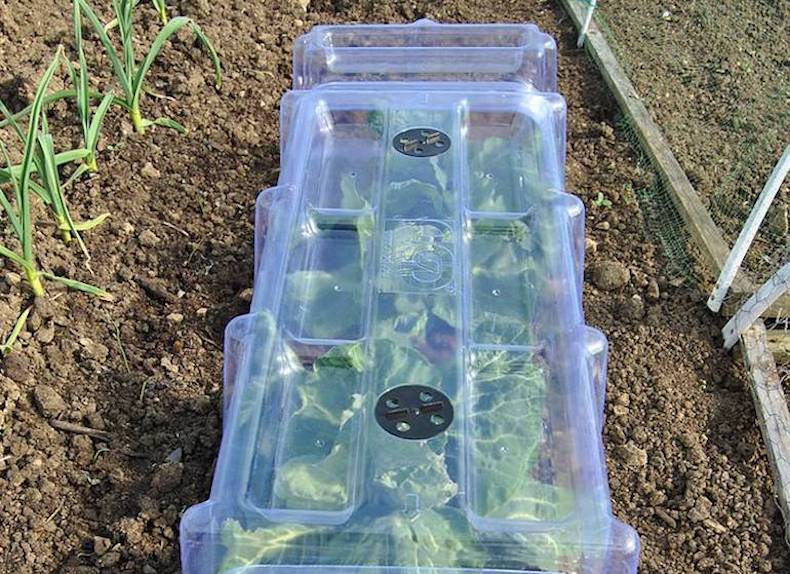
This long, tunnel cloche is ideal for rows of broad bean plants
Image: Mini Greenhouse Cloche from Thompson & Morgan
- For autumn sowing: October – November
- For spring sowing: February – April
- For planting young plants: May
Broad beans are normally sown in the spring, from February to April. However some varieties are particularly hardy and can be sown in autumn from October to November (provided that the soil is still reasonably warm). November sowings usually germinate within 2-3 weeks. They overwinter during the coldest months but start growing quickly again in spring, giving you a head start and an early harvest. In severe winters you may need to use fleece or a cloche to protect your crop.
When sowing broad beans directly into the ground in early spring or late autumn, put your cloches out in advance to warm the soil. This aids germination and helps the plants to get established early.
How to sow broad beans in the ground
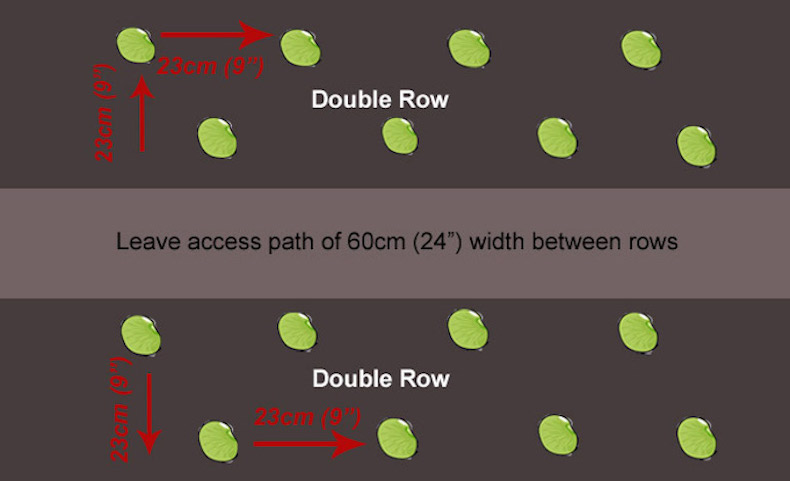
A typical broad bean planting scheme
Image: Thompson & Morgan
Sow your broad bean seeds in double rows, 23cm (9") apart. Stagger the seeds along each set of double rows to make the most of the space.
Broad bean seeds should be planted at a depth of 5cm (2") deep and a distance of 23cm (9") apart within each row. Water well once planted. Germination usually takes around 10 days.
Lay out as many sets of double rows as you need, but remember to allow at least 60cm (24") between each set to make it easier to access and harvest your crops.
How to sow broad beans in the greenhouse
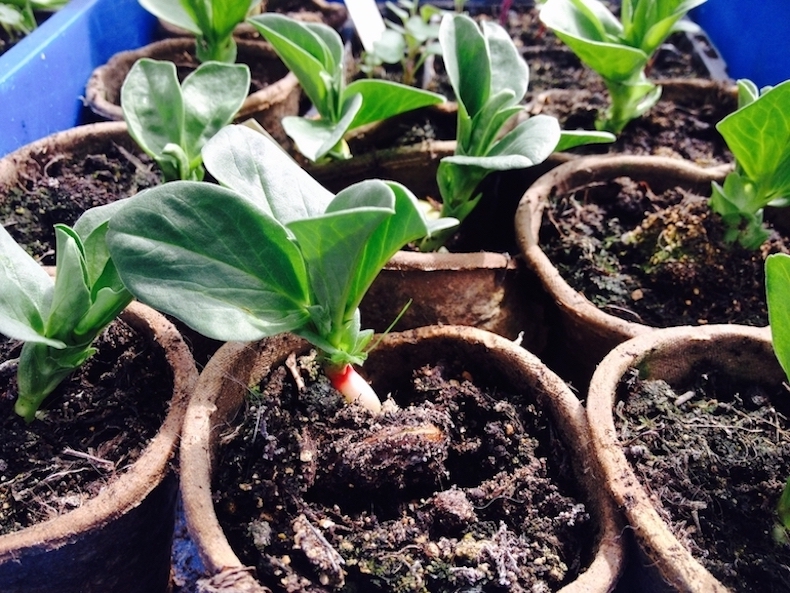
Broad bean plants started off in the greenhouse
Image: Victoria M Gardner/Shutterstock
If you prefer to start your broad bean plants in the greenhouse, they can be sown into module trays or small pots. Germination tends to be more reliable under greenhouse conditions and it's easier to control pests such as mice, slugs and snails.
If the soil is frozen outdoors then sowing in the greenhouse is a far better option. Your broad beans can be planted out once the soil is warmer and the plants have developed a good root system. Don't forget to 'harden them off' and acclimatise them to outdoor conditions prior to planting.
Tips for growing broad beans
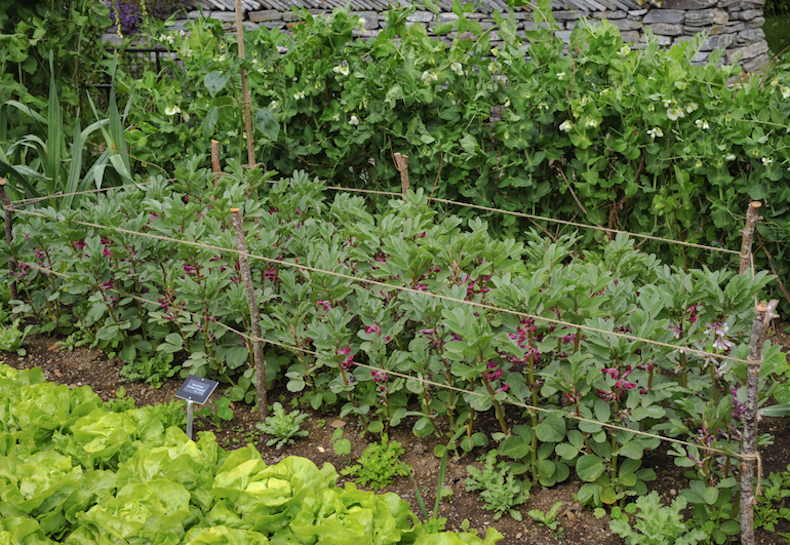
Support your broad beans with string
Image: Peter Turner Photography/Shutterstock
- Support your broad bean plants to prevent them from flopping under their own weight. Simply place a cane or stout stick at each corner of a double row and tie a taut piece of string between each cane. This is especially important in windy gardens.
- Keep your plants well watered, particularly as the flowers begin to set.
- Hoe between rows regularly to remove weeds.
- Pinch out the growing tips after the first flowers have set pods to deter blackfly and encourage further pods to set.
How to grow broad beans in pots
Broad beans can easily be grown in containers. Dwarf varieties such as Broad Bean 'The Sutton' are ideal for growing on the patio. They have deep root systems so choose a tall container to accommodate them, and be sure to keep them well watered throughout the growing season.
When to harvest broad beans
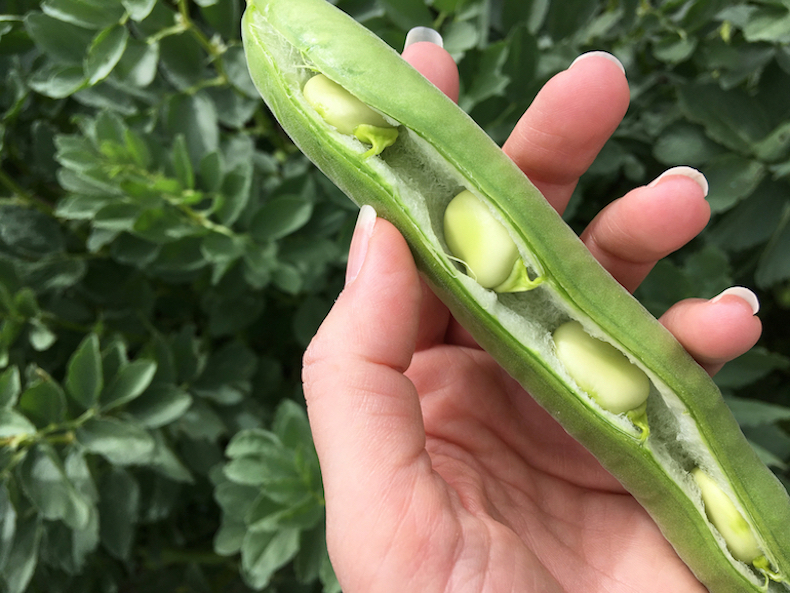
Check the scar on the bean to find out whether it's ripe to eat
Image: Eag1eEyes/Shutterstock
Broad beans can be harvested and cooked as entire pods while they're still immature, at around 7.5cm (3") long. However, they're more usually harvested a little later, when the pods are well filled and the seed still soft. The pods should be “shelled” and the individual beans removed and eaten.
The scar on the edge of each bean should be green or white in colour. If it's black, the beans have passed their best and will be tough and chewy when eaten.
Bumper crop? Broad beans are ideal for freezing. Simply pick, shell and pop them into a plastic bag in the freezer until you're ready to use them.
Common broad beans pests and diseases
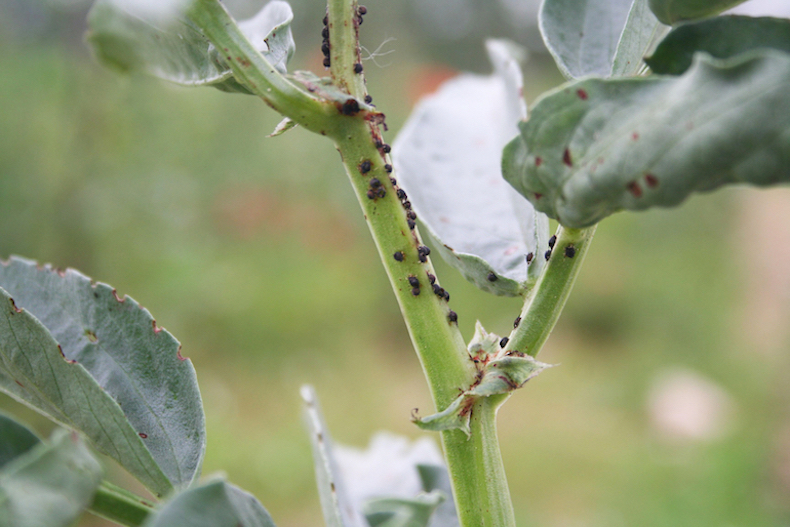
A black bean aphid infestationt
Image: TMsara
Mice - Mice are particularly partial to bean seeds and will often dig them up before they have a chance to germinate. Where mice are a particular problem, try starting your plants off in the greenhouse. Traps will help to control the problem. Direct sown crops can be covered with fleece during germination to prevent mice getting to them.
Blackfly - Aphids, particularly Blackfly, are a common problem when growing broad beans. They often attack the young growing tips. These can be pinched out and the plants sprayed with a suitable insecticide. Companion planting the strong smelling herb, summer savory, can also help repel black bean aphids.
Chocolate Spot - This disease is very distinctive and particularly prevalent during wet summers. Dark reddish or chocolate brown spots appear on the foliage and stems - in severe cases causing plants to die. Infected plants should be removed and destroyed.
To find out how to grow other bean varieties in your outdoor space, as well as variety recommendations head over to our hub page.
Sign Up For Exclusive Special Offers




© 2025 Thompson & Morgan. All rights reserved. A division of Branded Garden Products Limited.



